Not so heavy goods engines - the Bachmann 2251 Class
Previously I have described some of the 2-8-0 freight engine models that are currently available ready to run. Recently there have been questions on RMweb regarding the smaller Bachmann 0-6-0 2251 models and it seemed logical to post a summary here.

The early Mainline Model (37-059)
The current Bachmann models are direct descendents from the earlier models marketed under the Mainline branding. In fact the body shell mouldings are nearly identical. In a previous life I had a Mainline BR lined green model, bought from TAG in Doncaster in 1982 for £14.95. This was followed by a lined black model (pictured above) purchased on one of my day trips to Swindon, from Trent’s in 1984 for £14.99. Both engines have long since departed via that well known auction site. The lined black model was a superb runner, probably the best Mainline locomotive that I owned. The lined green model was not so good – emitting a regular rasping noise reminiscent of the real thing. A minor criticism might be that the chassis was unrealistically deep, presumably to maximise weight and tractive effort.
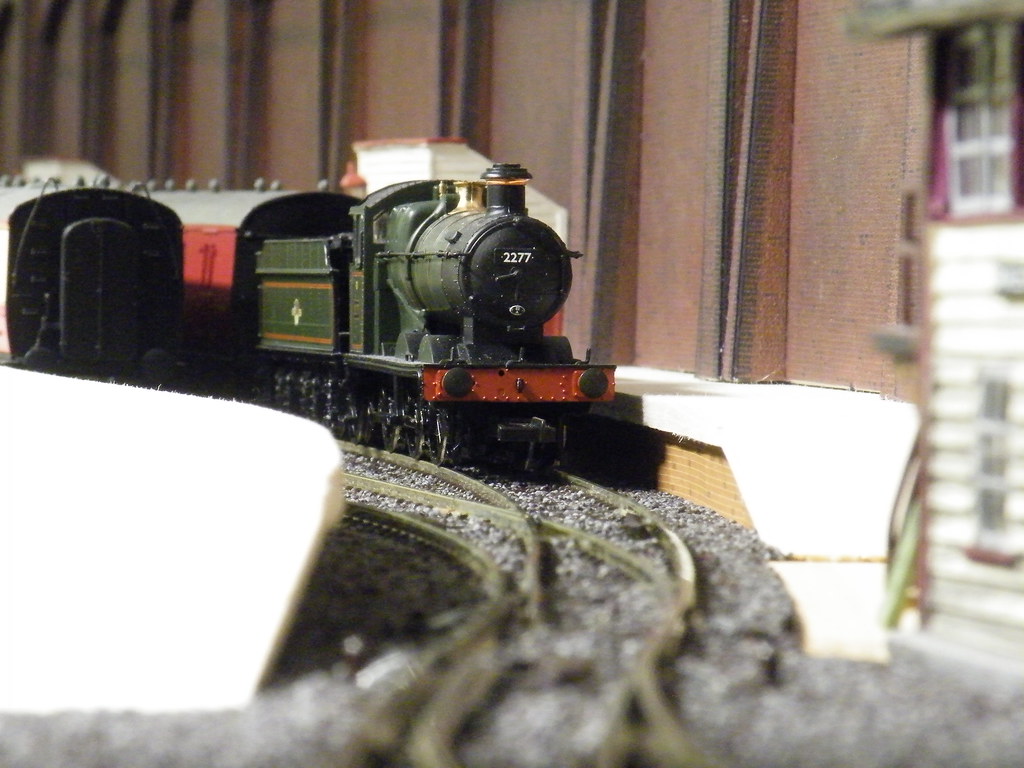
My First Bachmann Model (32-302)
Checking through my old Ian Allan train spotting books I appear only to have seen around half a dozen of these engines in real life. The shed codes for these engines included Neyland, Machynlleth and Oswestry, and suggest that these engines were all active during two consecutive1960s summer holiday visits to St David’s (Pembrokeshire).
The current layout features an ex GWR branchline, with terminus and at the start of construction purchase of the Bachmann model was a high priority. The motor in the Bachmann model is smaller and does not protrude into the cab as on the Mainline model. The early Bachmann models also feature sprung buffers.
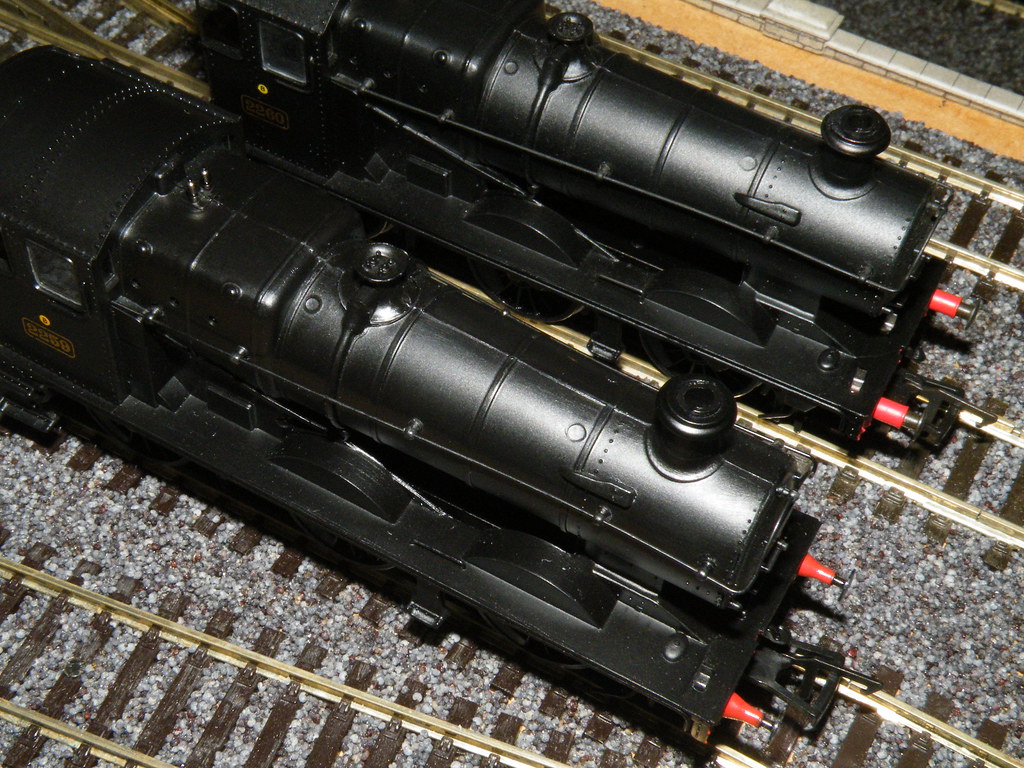
BR Black – with and without ROD tender (32-311 and 32-301)
With time I have also acquired examples with BR black livery, with and without the ROD tender. The ‘ROD’ model (32-311) does not have sprung buffers. Some railway modellers have expressed disappointment with the quality of the body moulding – the boiler seam on my example is very prominent.
The ‘ROD’ model is also DC ready as is ‘3205’from the Rambler Set. Again modellers have expressed dismay at the poor haulage capacity of these new DC ready models.
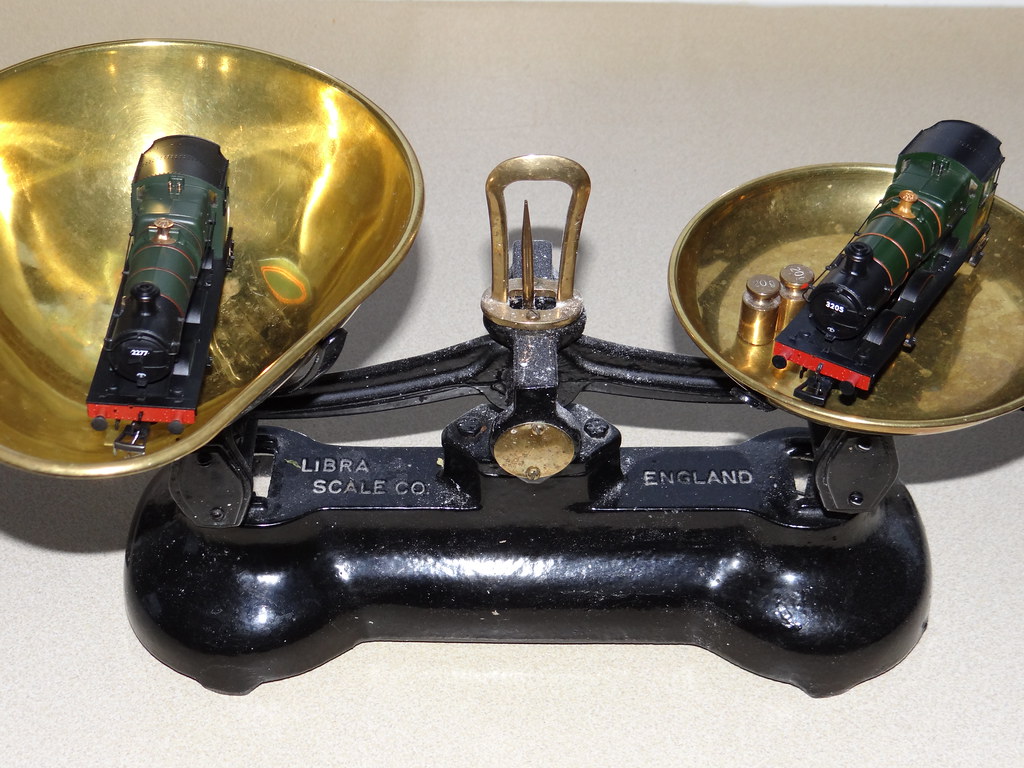
New versus old
In order to provide room for the digital chip in the engine Bachmann have halved the size of the ballast weight within the boiler. This reduces the total weight of the engine by almost 40gm, from 195gm down to 155gm.
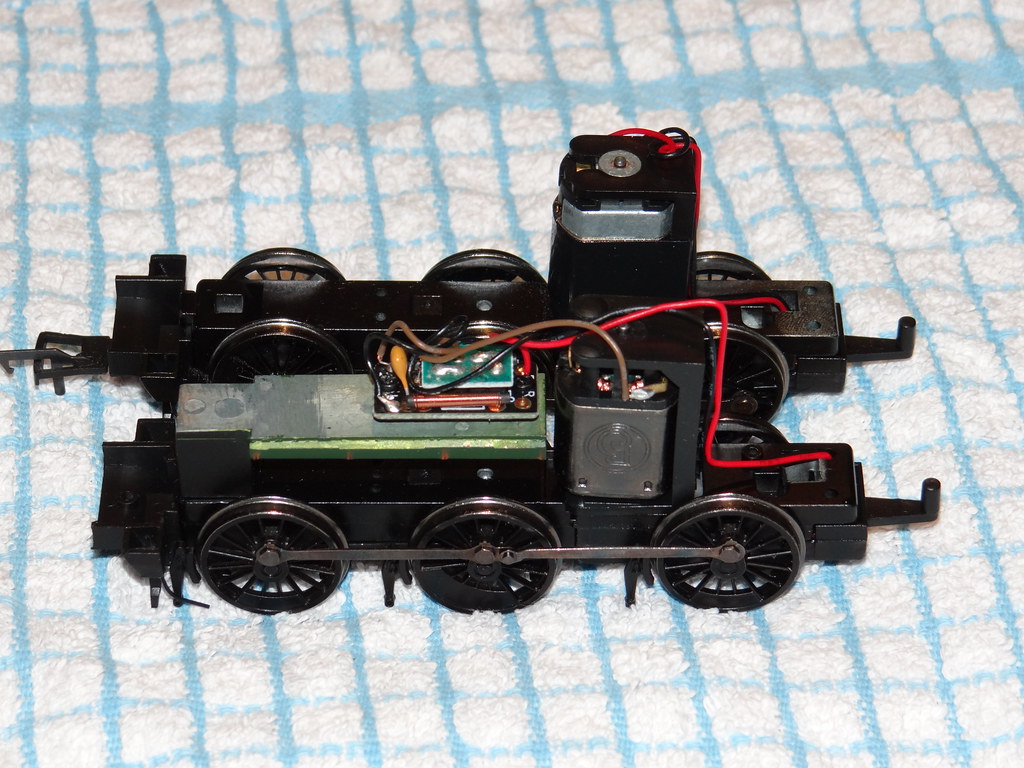
Old and New
The view above attempts to show the scale of the lack of weight problem. Bachmann have revised the way that the model is assembled. For the early models the boiler is completely filled with a metal casting and is a permanent fixture within the plastic body shell. For the latest DC ready models this casting has lost its ‘top’ and the lower half has been given its own fixing screw so that it is separate from the plastic body shell and forms part of the chassis.
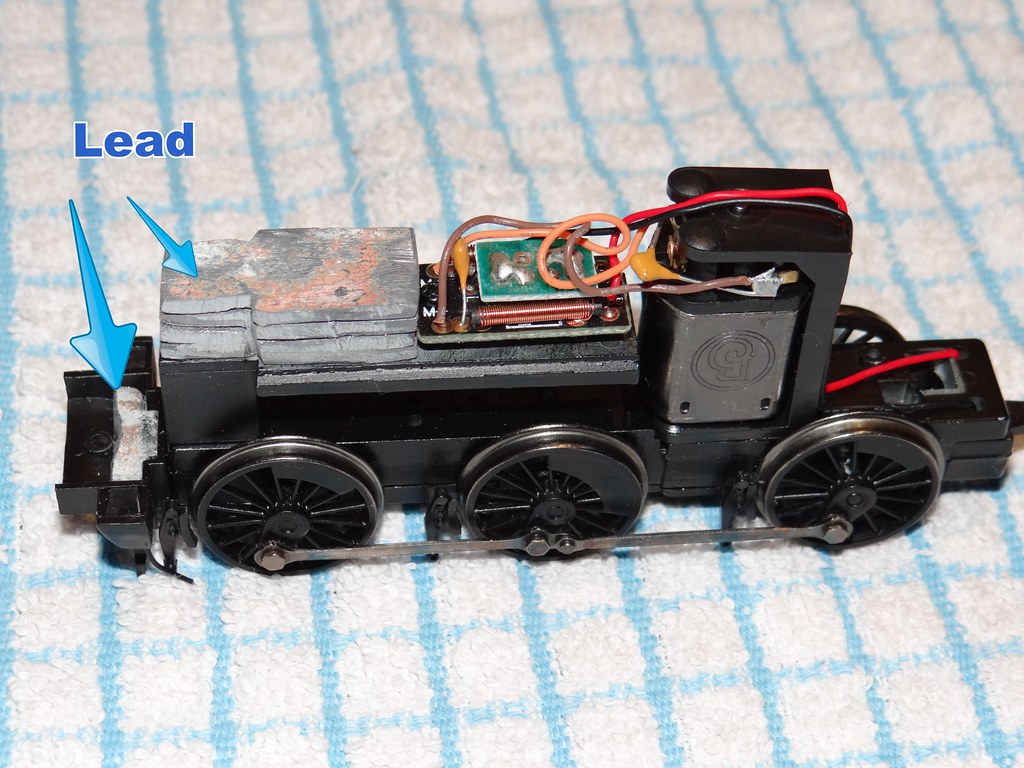
Adding lead to the chassis
Luckily if you are like me and not worried about digital control it is easy enough to add some lead.
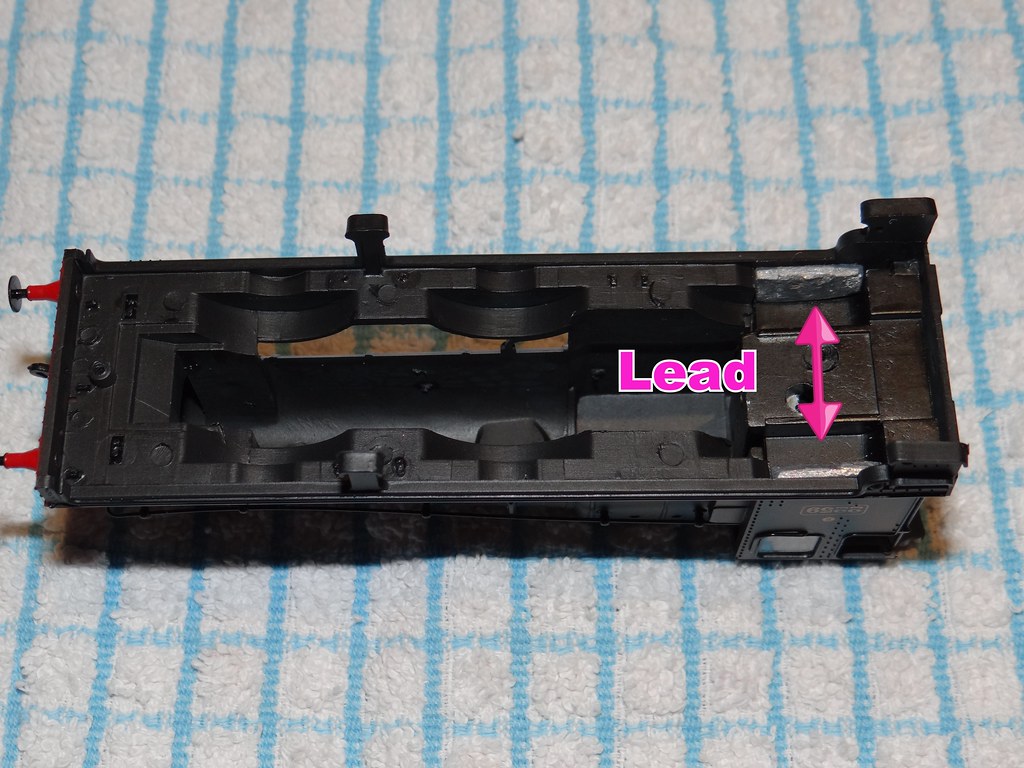
Adding lead to the body shell
Interestingly on one DC ready engine there were already square pieces of metal in the sand boxes, for the other model there was just an open space – asking to be filled with a single lead shot!
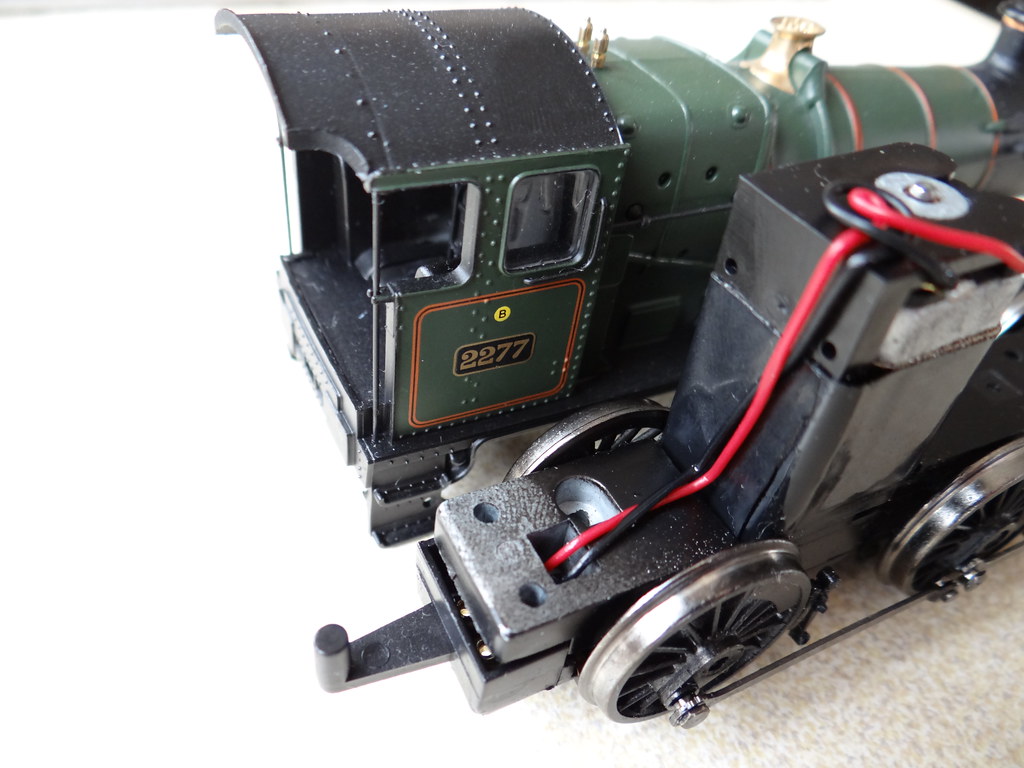
Wiring for early models (32-301/2)
Another point of recent discussion has been the wiring to the chassis. The view above shows how the older engines were wired using the large central opening to the rear of the motor.
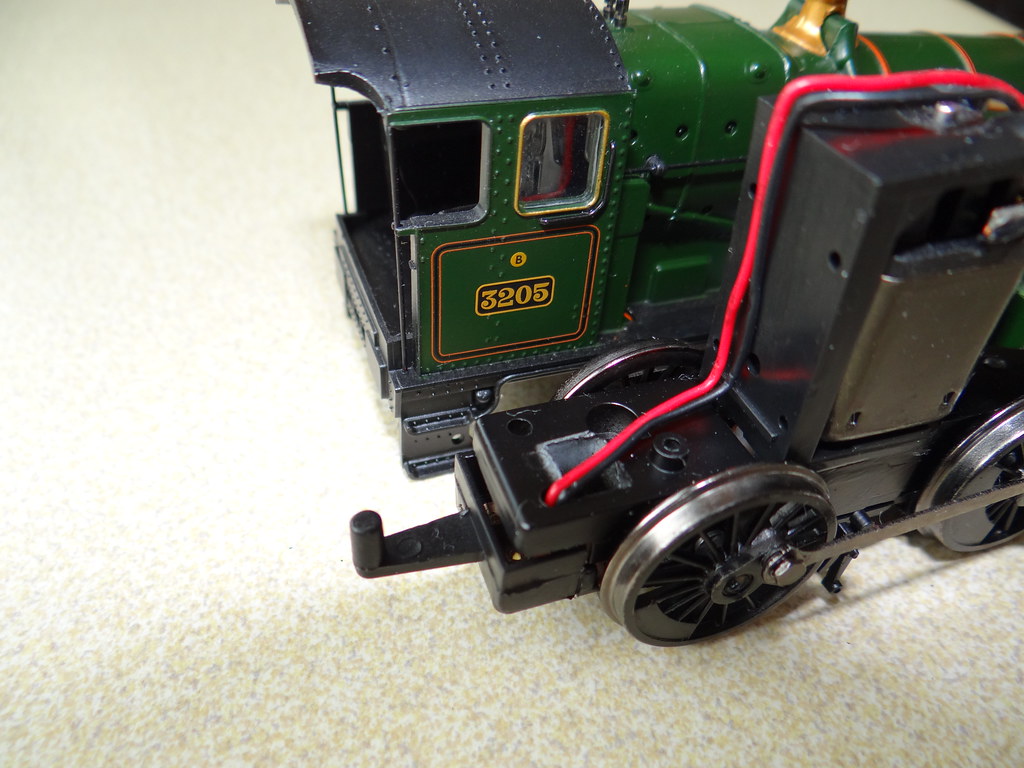
Wiring for later model (ex Rambler Set)
In the later models the wires have been taken further back to one of the small openings. This is not particularly clever as the wires are being trapped by the body causing distortion to the plastic body shell and possible damage to the wiring.

Wiring for BR ‘ROD’ (32-311)
On the ‘ROD’ engine the wiring is different again – this time the red and black motor wires have been fed through separate holes. Seemingly I am not alone in experiencing erratic running with this particular model – simply by overtightening the body fixing screw.
I could suggest that these last pictures indicate a lack of consistency (quality control) in the assembly process.
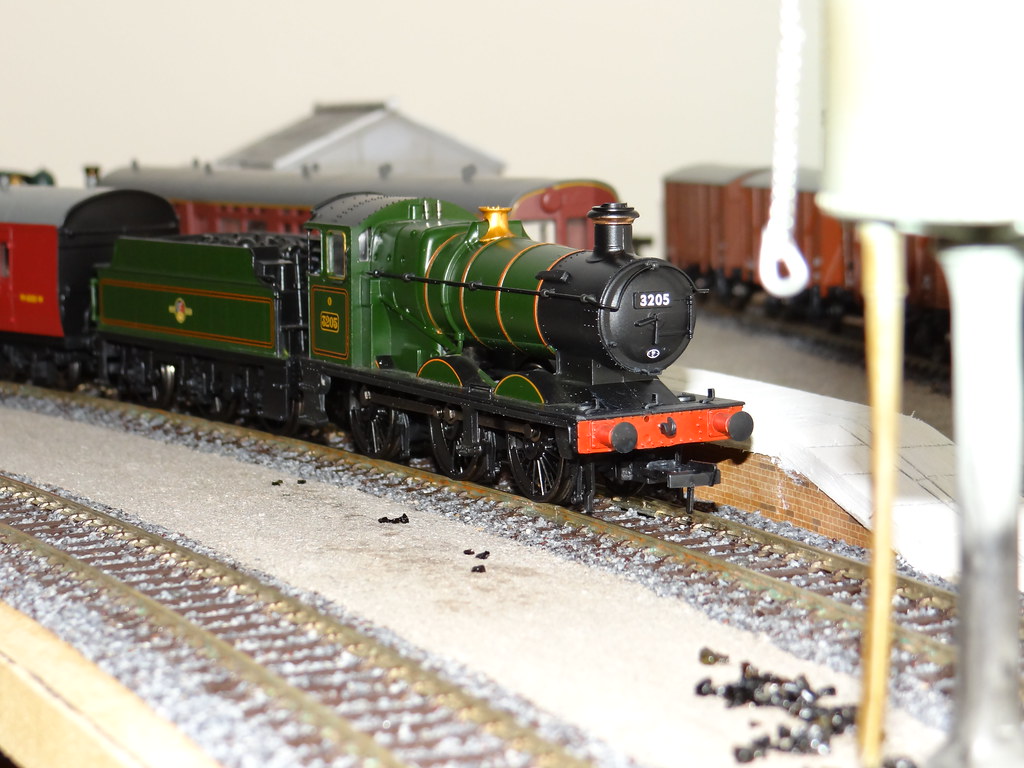
Time for a play
-
 3
3


.thumb.jpg.60c53fcbcaa34017b05b8919d1a9e6d2.jpg)

6 Comments
Recommended Comments
Create an account or sign in to comment
You need to be a member in order to leave a comment
Create an account
Sign up for a new account in our community. It's easy!
Register a new accountSign in
Already have an account? Sign in here.
Sign In Now